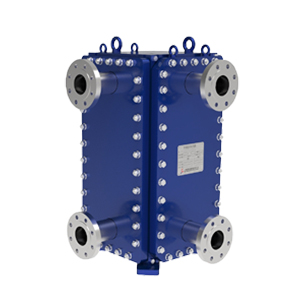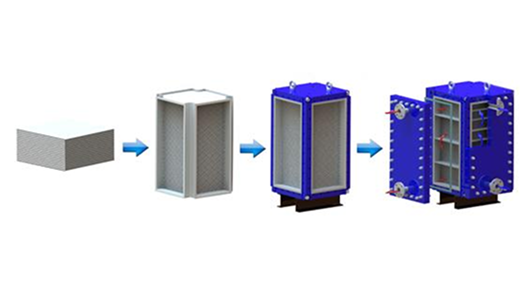Why Ignoring Your Heat Exchanger Leads to Inefficiency
The Direct Link Between Neglect and Inefficiency

A neglected heat exchanger directly impacts a facility's bottom line. The connection between poor maintenance and poor performance is clear. Several factors contribute to this decline, turning an efficient asset into a significant operational liability.
The Buildup of Fouling and Scale
Fouling is the primary enemy of heat exchanger efficiency. It describes any unwanted material that accumulates on the heat transfer surfaces. This buildup acts like a layer of insulation, creating a barrier that obstructs the flow of thermal energy. The system cannot transfer heat effectively between the two fluids.
Common types of fouling include:
·Scaling: Hard mineral deposits like calcium carbonate precipitate from the process fluid.
·Particulate Fouling: Dirt, sand, or rust particles settle on the surfaces.
·Biological Fouling: Algae, slime, and bacteria grow within the unit.
·Corrosion Fouling: The heat exchanger material itself rusts, creating an insulating layer of oxides.
This insulating effect forces the entire system to compensate. The boiler or chiller must run longer and at higher capacities to achieve the target temperature, consuming more fuel or electricity.
Increased Pressure Drop and Pumping Costs
Fouling does more than just insulate; it also physically constricts the flow channels within the heat exchanger. Narrower passages create higher resistance. The system's pumps must work significantly harder to push the fluid through the unit. This increased workload directly translates to higher energy consumption.
Consider the relationship between fouling and operational costs:
| Fouling Level | Channel Restriction | Pump Workload | Energy Cost |
|---|---|---|---|
| Clean | None | Normal | Baseline |
| Minor | Low | Increased | +10-15% |
| Severe | High | Maximum | +25% or more |
This constant strain not only inflates utility bills but also accelerates wear and tear on pumps and motors, leading to premature failure. Timely plate heat exchanger cleaning services can reverse this trend and restore normal operating pressures.
Compromised Production and Quality
Inefficient heat transfer has serious consequences for production output and product quality. Many industrial processes rely on precise temperature control for success. A fouled heat exchanger fails to deliver this control.
This failure can manifest in several ways:
Inconsistent Product Temperature: Products may not be heated or cooled to the correct specification, leading to batches that fail quality control.
Reduced Throughput: The system cannot process the same volume in the same amount of time because it takes longer to reach target temperatures. This slowdown creates production bottlenecks.
Increased Spoilage: In food, beverage, or pharmaceutical applications, improper pasteurization or cooling can lead to spoilage and safety risks.
Ultimately, a dirty heat exchanger compromises the very process it is designed to support. It undermines product integrity and reduces the overall productivity of the plant.
Restore Performance with Plate Heat Exchanger Cleaning Services

Neglected heat exchangers do not have to become permanent liabilities. Professional plate heat exchanger cleaning services offer a direct solution to reverse inefficiency. This proactive maintenance restores the unit to its original design specifications, unlocking significant operational benefits.
Regain Optimal Heat Transfer
The primary goal of cleaning is to remove all traces of fouling and scale. Technicians use specialized methods to dissolve or dislodge buildup from the plate surfaces. This process eliminates the insulating barrier that blocks thermal energy. With clean surfaces, the heat exchanger can once again achieve maximum heat transfer. The system no longer needs to overwork to meet temperature demands.
A clean heat exchanger works smarter, not harder. It efficiently transfers heat, allowing the entire system to operate under normal, less stressful conditions.
Lower Your Energy Bills
Restored efficiency translates directly into financial savings. A clean unit requires less energy for two key reasons. First, improved heat transfer means chillers or boilers run for shorter periods. Second, clearing flow-path restrictions lowers the pressure drop. Pumps consume far less electricity to circulate fluid through the unit. Investing in plate heat exchanger cleaning services provides a clear return through reduced utility costs.
Extend Equipment Lifespan and Prevent Downtime
Regular cleaning is a crucial strategy for asset protection. It mitigates issues that lead to premature equipment failure and costly shutdowns. The benefits include:
·Reduced Mechanical Stress: Lower operating pressures decrease wear on pump motors and seals.
·Corrosion Prevention: Removing corrosive deposits stops them from eating away at the plate material, preventing leaks.
·Fewer Unplanned Outages: Proactive maintenance from plate heat exchanger cleaning services identifies potential problems before they cause a catastrophic failure.
This approach ensures long-term reliability and protects a facility's investment.
Ignoring a heat exchanger is a direct path to operational inefficiency. This neglect increases energy costs, reduces production output, and elevates failure risks. Implementing a regular schedule with professional plate heat exchanger cleaning services is the most effective strategy. Proactive maintenance ensures long-term equipment reliability and protects a facility's investment.
FAQ
How often should a heat exchanger be cleaned?
Experts recommend an annual inspection. The cleaning frequency depends on the system's operating conditions and the type of fluid it processes. Regular checks determine the best schedule.
What are signs of a fouled heat exchanger?
Key indicators include rising energy bills, higher pressure readings, and an inability to reach target temperatures. These signs point directly to reduced efficiency and the need for service.
Can a facility clean its own heat exchanger?
Professional plate heat exchanger cleaning services are recommended. Technicians use specialized equipment and chemicals to ensure a thorough cleaning without damaging the sensitive plates. ✅





